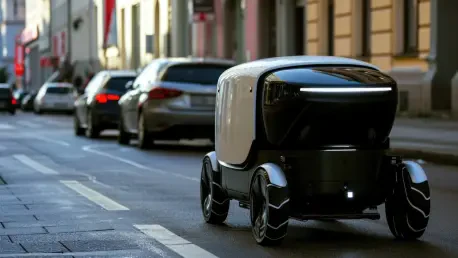Modern urban landscapes are on the verge of a seismic shift as autonomous vehicles (AVs) emerge as a cornerstone of future transportation. These self-driving vehicles, fortified by sophisticated technologies, promise to redefine how cities function and individuals commute. A pivotal player in this evolution, WeRide has strategically expanded into Saudi Arabia, aligning its efforts with the nation’s Vision 2030, which aims to enhance urban mobility through cutting-edge solutions. This review examines the nuanced developments of AV technology, spotlighting its features, applications, and unfolding impact on a global scale.
Core Principles and Evolution of Autonomous Vehicles
Autonomous vehicle technology represents a synthesis of multiple scientific advancements, engineered to navigate without human intervention. Its core components include a suite of sensors, advanced computing systems, and connectivity capabilities, harmoniously integrated to create a smart mobility solution. The technology has its roots in early research experiments and has evolved through iterative innovations, contributing to its current sophisticated framework. It holds substantial relevance within the broader technological landscape, impacting industries ranging from transportation to logistics.
Fundamental Features of Autonomous Vehicles
Sensor and Mapping Innovations
Central to autonomous vehicle functionality is a robust sensor and mapping system. This subsystem utilizes cameras, LiDAR, and radar technologies to continuously scan the environment, creating detailed, dynamic representations of surroundings. The collected data enables precise localization and navigation, ensuring safe and efficient travel across diverse terrains. These elements are indispensable in achieving the high-level autonomy that modern vehicles aspire to, ensuring seamless interaction with the road and other participants.
Artificial Intelligence and Machine Learning
At the heart of an AV’s decision-making process lies artificial intelligence (AI) and machine learning algorithms. These technologies empower vehicles with the ability to learn from an extensive range of scenarios, enhancing their decision-making accuracy and predictive capabilities. AI systems process vast streams of real-time data, orchestrating everything from basic steering adjustments to complex, adaptive driving strategies in unpredictable conditions. This synergy of algorithms and machine perception has propelled autonomous vehicles closer to mainstream adoption.
Latest Developments in the Field
Recent years have witnessed remarkable strides in autonomous vehicle technology. Innovators have introduced advancements in vehicle-to-everything (V2X) communication, which facilitates information sharing between vehicles and infrastructure, enhancing traffic flow and safety. Additionally, the integration of 5G networks has amplified connectivity capabilities, enabling more responsive and reliable autonomous operations. These developments illustrate a broader trend toward more connected, intelligent transportation ecosystems, reshaping consumer and industry participation.
Real-World Utilization of Autonomous Vehicles
Autonomous vehicle technology is rapidly finding its way into numerous sectors, revolutionizing traditional transportation models. In Saudi Arabia, companies like WeRide are leading the transition with deployments of Robotaxis and Robobuses. These vehicles serve as pioneering efforts in achieving efficient, driverless public transportation. Moreover, AVs are being integrated into logistics, agriculture, and industrial operations, demonstrating value and efficiency in a range of applications across different environments, optimizing productivity and minimizing operational costs.
Challenges Facing Autonomous Vehicle Technology
Despite notable advancements, autonomous vehicle technology continues to grapple with a spectrum of challenges. Technical constraints such as reliable sensor fusion, real-time data processing limits, and ensuring safety in chaotic urban settings remain hurdles to surmount. Regulatory frameworks also present challenges, as policymakers and companies work to establish robust standards that ensure security and scalability. Industry stakeholders are exploring solutions like improving AI interpretability and legislating autonomous driving norms to navigate these difficulties.
Prospects for Autonomous Vehicle Development
As autonomous vehicle technology progresses, the landscape of future urban mobility is poised for profound change. Researchers are exploring innovations like complete vehicle autonomy and advanced AI models, coupled with sustainable energy integration, which promise to redefine transportation. The technology is positioned to catalyze shifts in public policy, urban planning, and economic structures, promising a transformation in how people and goods move, while triggering new opportunities for integration with other emerging technologies.
Synthesis of Autonomous Vehicle Insights
Evaluating the trajectory of autonomous vehicle technology reveals a narrative of continuous progress and potential. It has already left a significant imprint on various sectors, offering glimpses of its transformative possibilities. Continued research and collaboration across industries will be pivotal in overcoming existing challenges and propelling the technology toward omnipresence in everyday life. As developments unfold, proactive measures and forward-thinking strategies will be crucial in leveraging the full capacities of autonomous vehicles, steering society toward a future defined by intelligent, autonomous mobility solutions.









